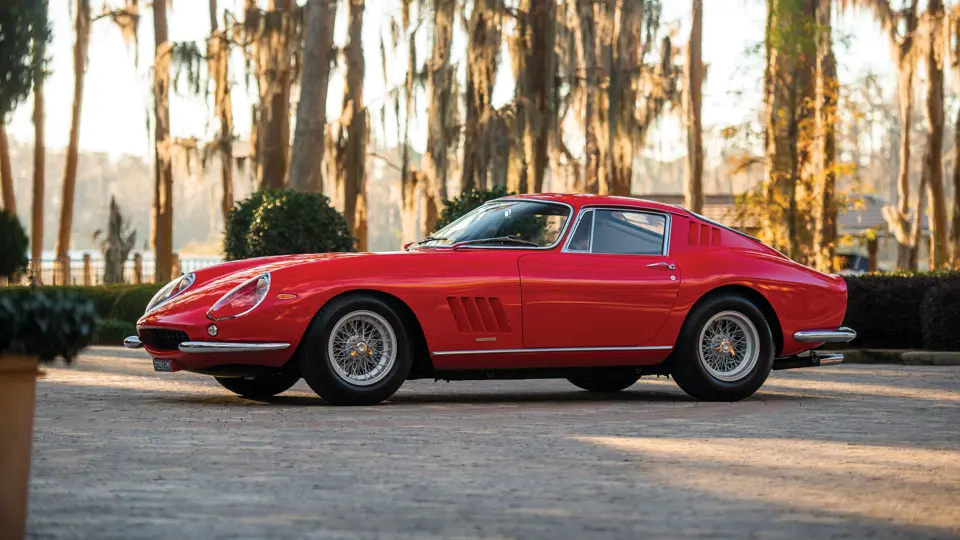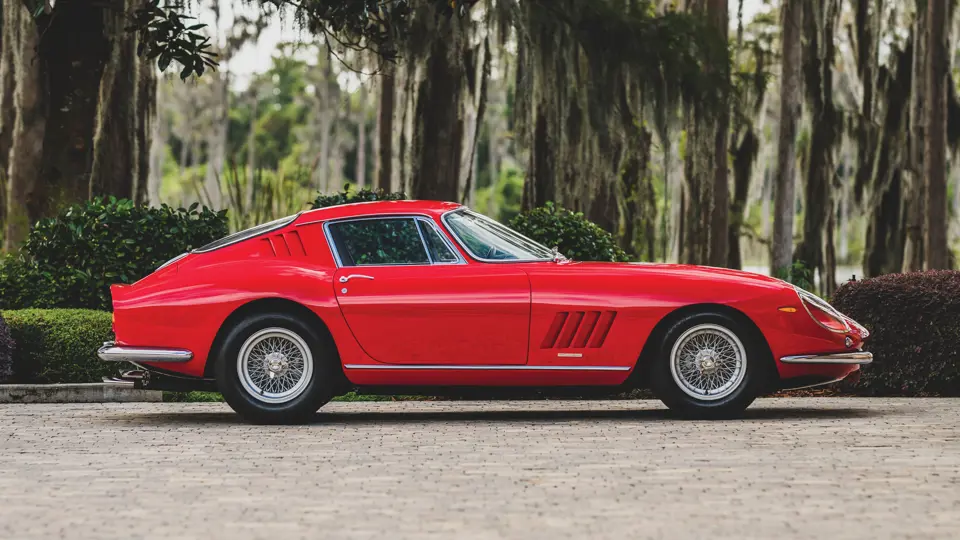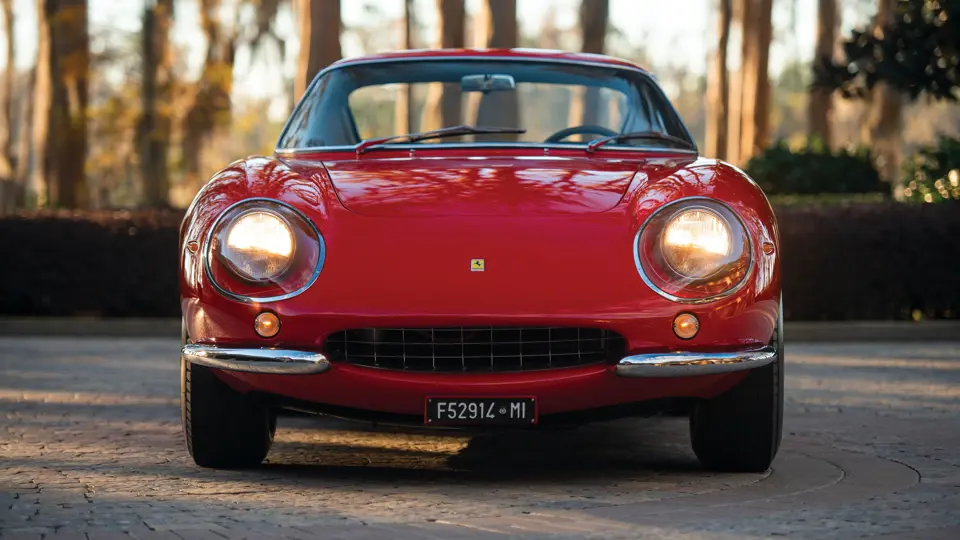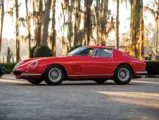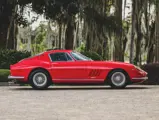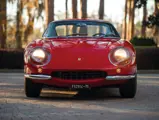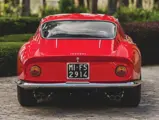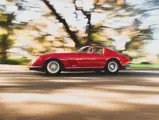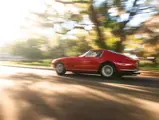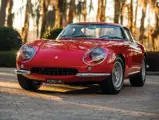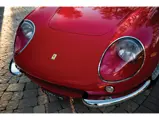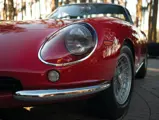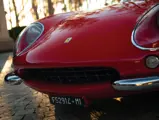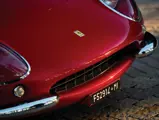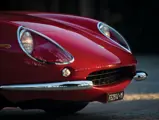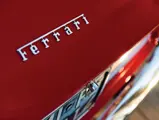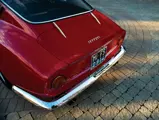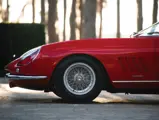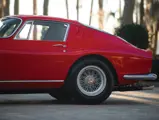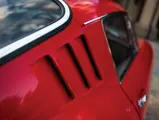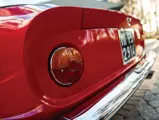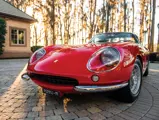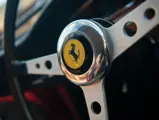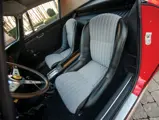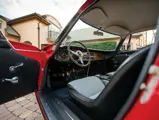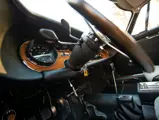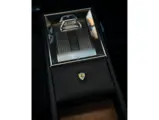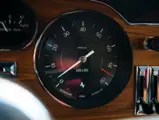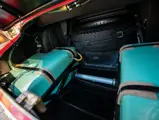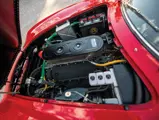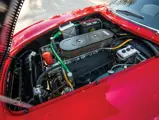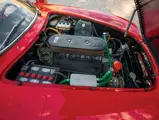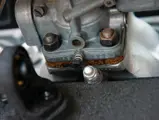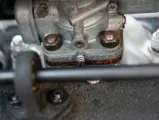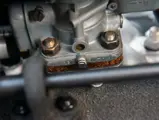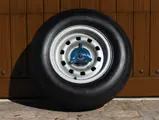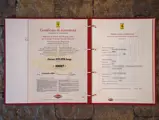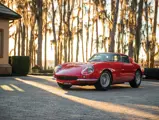
1966 Ferrari 275 GTB/C by Scaglietti
{{lr.item.text}}
$7,595,000 USD | Sold
{{bidding.lot.reserveStatusFormatted}}
- A highly desirable example of the final GT sports-racing model built by Maranello’s competition department; the ninth of 12 third-series examples built
- Highly correct example that was only minimally raced in period; benefits from a comprehensive three-year restoration completed in 2017
- Accompanied by its Ferrari Classiche Red Book; retains matching-numbers engine and gearbox
- FCA Platinum Award winner at the 2018 Cavallino Classic and presented at the 2017 Pebble Beach Concours d’Elegance and the 2021 and 2022 Amelia Island Concours d’Elegance
- Documented with factory build sheets, vehicle histories, ACI estratto cronologico, period racing photos, FIA Historic Technical Passport, former registrations, MOT certificates, bills of sale, and service and restoration invoices
THE EVOLUTION OF THE 275 GTB COMPETIZIONE
Maranello experienced so much success in GT-class racing with the venerable 250 GT platform—from the Testa Rossa and California Spider through the Short-Wheelbase Berlinetta and the GTO—that Enzo Ferrari nearly took continued success for granted. But the FIA threw a series of hurdles at the manufacturer that proved nearly as daunting as the competition.
First, the powerful 250 LM was denied GT homologation status due to its 275-specification engine. The model was forced to run in the prototype category, where it was hopelessly outclassed. The new 275 GTB model became the obvious foundation for continued attempts at GT racing, and during late 1964 Ferrari began work on a competition variant that shaved significant weight from the production version. Again the FIA denied homologation status—this time claiming the car was too light in comparison to the standard production car. After a political tug-of-war, Ferrari ultimately complied by building three cars in 1965 at a compromised weight. One of these, chassis number 06885, took a class win at the 24 Hours of Le Mans while finishing 3rd overall.
In recognition of this success, Ferrari built a series of 10 more competition 275 examples with short-nose bodywork, though they were not officially recognized on build sheets to be anything beyond a standard production example. Utilizing the production model’s wet-sump engine, these berlinettas were nearly identical to the standard road cars with the exception of thin-gauge lightweight aluminum coachwork, various weight-saving measures, and the use of competition fuel tanks.
For 1966, the factory developed the competition specifications to a greater degree, building a series of 12 two-cam cars with long-nose bodywork, and officially recognizing the model as the 275 GTB/C. Utilizing ultra-thin-gauge aluminum coachwork with bulging posterior haunches to accommodate wider rear wheels, the latest GTB/C was also equipped with an aluminum floorpan and twin fiberglass fuel tanks capable of holding 36 gallons. The dry-sump type 213 competition engine from the 250 LM was structurally reinforced with a ribbed case and equipped with a special high-lift camshaft, forged pistons, and specialized valves and crankshaft. The casings for the sump plate, clutch bell housing, and timing chain were all cast from Elektron, a lightweight magnesium alloy.
Voracious triple Weber 40 DFI/3 carburetors fed by curved velocity stacks contributed to a robust 9.3:1 compression ratio, and the racing engine was mated to a magnesium alloy transaxle case via a large-diameter driveshaft. Outside oil filler caps, extensive use of Plexiglas, and Borrani wire wheels (outside-laced at the front) completed the model’s aggressive technical profile.
The 275 GTB/C was notably the last racing GT model built by Ferrari’s competition department, and two examples went on to take GT class wins at Le Mans in 1966 and 1967, earning Maranello three consecutive class wins at La Sarthe. Never campaigned by the factory, these highly capable berlinettas were exclusively sold to and raced by preferred privateer clients, and they are now regarded with great acclaim as some of the most powerful Ferrari GT sports-racers of their era—the rightful successors to the mighty GTO.
CHASSIS NUMBER 09067
This third-series 275 GTB/C benefits from sparing competition use in period, doting care during a former 19-year ownership, and a recent three-year comprehensive restoration, resulting in one of the most authentic and well-presented examples of the venerable 275-based racing variant. According to the research of marque expert Marcel Massini, chassis number 09067 is the ninth of the 12 third-series cars. The chassis was dispatched to Scaglietti for coachwork in May 1966, finished in Rosso Chiaro paint and trimmed with a Nero interior featuring grey cloth seat inserts.
After a certificate of origin was issued in August 1966, the Ferrari was sold new to the Milan-based company Editoriale Il Borgo di Luciano Conti. Signor Conti was an amateur racing driver-turned-publisher who founded an important motorsports weekly called Autosprint, which received significant support from Enzo Ferrari (who was disenchanted with the Italian motoring press, and occasionally even penned an article for the publication). The car was purchased for the use of an aspiring young racing driver named Arturo Merzario, who would famously go on to become a factory grand prix driver, and a central component of Ferrari’s legendary 1973 sports-prototype championship winning team—one of the most successful teams in the Scuderia’s storied history.
In March 1967 Conti sold the 275 GTB/C to Enrico Tronconi, and a year later the car was acquired from him by Vito Figlioni. The Ferrari was fitted with a chromed grille guard and campaigned at two racing events during 1969, the Castell’ Aquarto-Vernasca Hillclimb and the Colle San Eusebio Hillclimb, both of which resulted in 1st-place finishes by driver Cesare Marchesi. In February 1973, Marchesi arranged a sale from Figlioli to Emilio Gritti Morlacchi, who was a member of the Etneo Veteran Car Club, a significant motoring organization that was Sicily’s first ASI-recognized club.
In 1973 the Ferrari was purchased by Amsterdam resident Dr. Paul Schouwenburg, commencing 22 years of ownership based in The Netherlands. A year later the 275 was sold to Cees Fokke Bosch, who retained possession for ten years before selling the car to Nico Koel in 1985. Mr. Koel presented the berlinetta at several events over the following five years and raced the car at the AvD-Oldtimer Grand Prix at the Nürburgring in August 1988.
In March 1995 Koel sold the Ferrari to a Hong Kong collector, and the car was domiciled in England. Over his 19-year ownership, the collector would drive the 275 in a host of European vintage touring events, including four appearances at the Tour de France Automobile and five appearances at the Tour Auto. The berlinetta was presented at the 1996 Ferrari 275 Reunion in Oxford and the 1998 Coys International Historic Race Festival; it was later driven on the 40th Anniversary of the Ferrari 250 GTO Tour in France in September 2002, and the Ferrari Factory 275 Anniversary Tour through Tuscany in June 2004.
Throughout this ownership, the beautiful 275 was routinely tended to as-needed by Chris Holly and his team of specialists at The Light Car Company, who carefully prepared the car and provided ongoing support during each of the touring events. Importantly, in September 2004, the GTB/C was authenticated by Ferrari Classiche; its accompanying Red Book reports that the car retains its numbers-matching engine and gearbox, as well as its special alloy coachwork.
RESTORED WITH AN EYE TOWARD AUTHENTICITY
In May 2014 the Ferrari was purchased by a respected collector based in North Carolina, and he immediately commissioned Mark Allin’s Rare Drive of East Kingston, New Hampshire, to begin a restoration. Two months later the 275 was the cover car for a feature in Scuderia, a marque-focused magazine published in Japan.
In September 2016, the 275 was sold to the consignor, and he ensured that work by Rare Drive was continued with the goal of a comprehensive refurbishment to concours standards. All mechanical systems were rebuilt, while the exterior and cockpit were refinished in the proper factory livery. The technicians were delighted to discover matching body number markings (B-11) on a majority of the panels and interior components, and they additionally found the original seat insert material under a subsequent recovering: a square-woven grey fabric that they duly replicated for reupholstery.
After completing the painstaking refurbishment in August 2017, the beautiful Ferrari was then presented at the 2017 Pebble Beach Concours d’Elegance as part of Ferrari’s 70th Anniversary celebration, and at the 2018 Cavallino Classic, where it won an FCA Platinum Award. Awards continued at various local concours d’elegance through the remainder of the year, including the Sponsors Choice award at Boca Raton, the Palmetto Award at Hilton Head Island, and exhibition at the Trump Charlotte Concours d’Elegance. The car was also presented in consecutive appearances at the 2021 and 2022 Amelia Island Concours d’Elegance, the latter of which celebrated “75 Years of Rosso.”
Faithfully presented in its original factory color combination, this Ferrari is accompanied by a complete set of tools, as well as an extra set of Campagnolo Fuse alloy wheels shod with Michelin XWX tires. It is furthermore documented with the Ferrari Classiche Red Book, factory build sheets, history reports by Marcel Massini and Rosso Corsa Consulting, and numerous restoration invoices.
It is important to note that many of the 275 GTB/C examples were aggressively campaigned in period, and with the model’s extremely thin-skinned aluminum, cars were often compromised by the slightest of collisions. Chassis number 09067 claims an early accident-free life with only two recorded races in period, and gentle touring use by its subsequent conservators. Ideal for further touring enjoyment or presentation at major concours d’elegance and marque gatherings, this important and rare berlinetta would make a superlative acquisition for any Ferrari enthusiast or racecar collector.




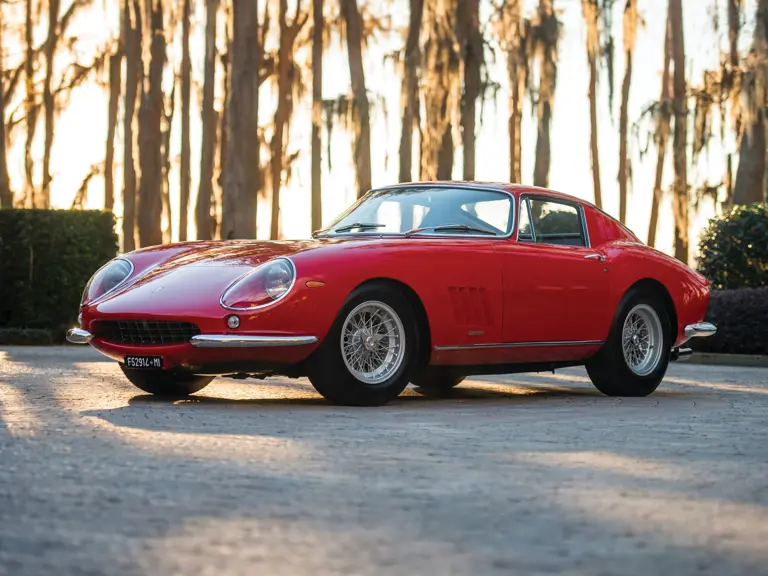
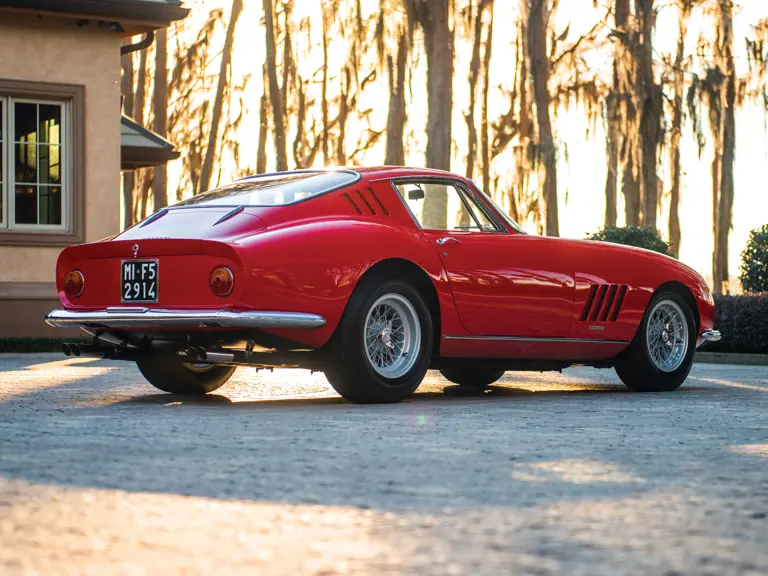
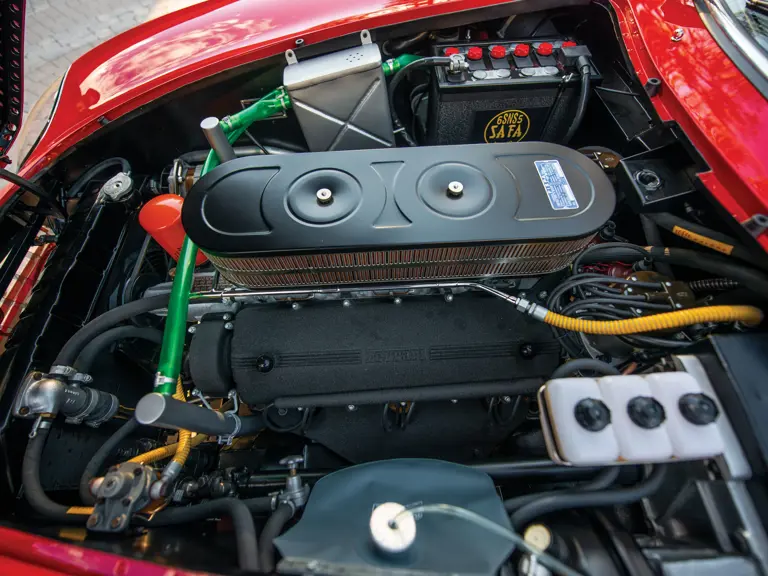
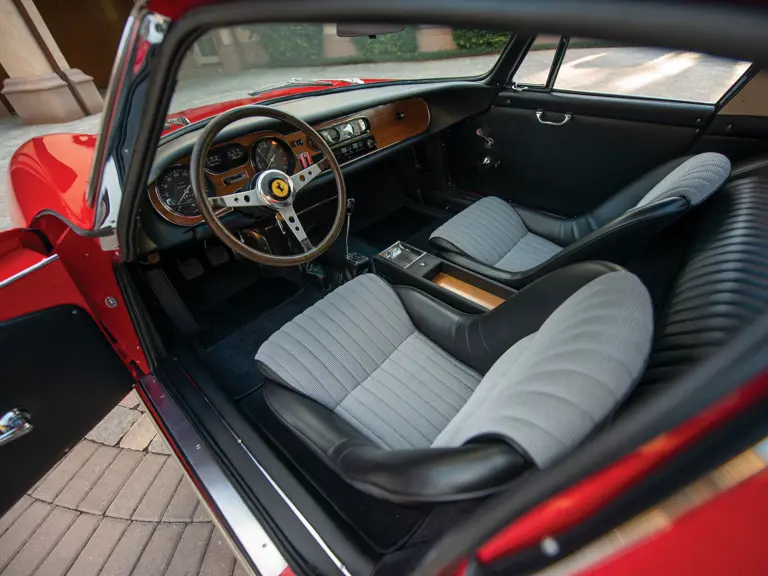
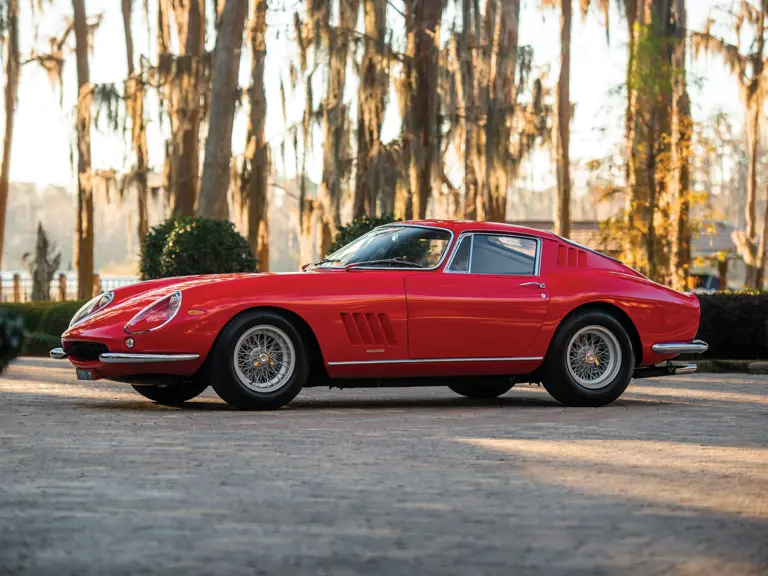
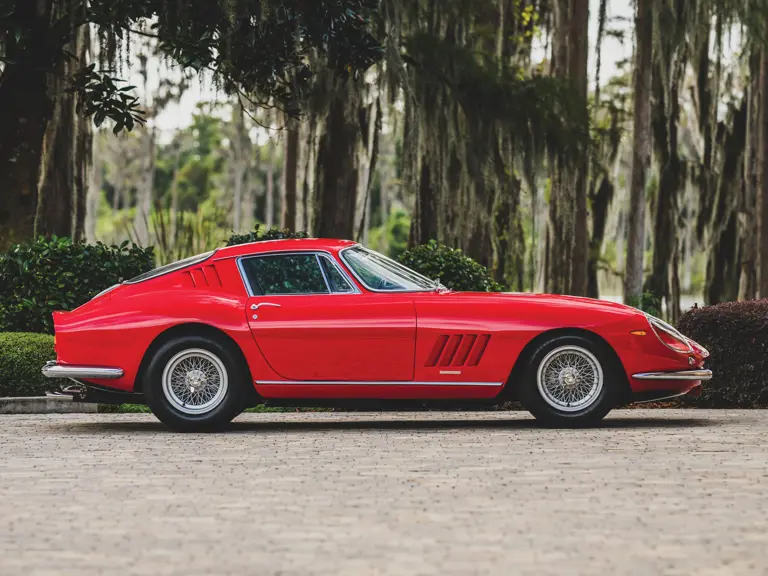
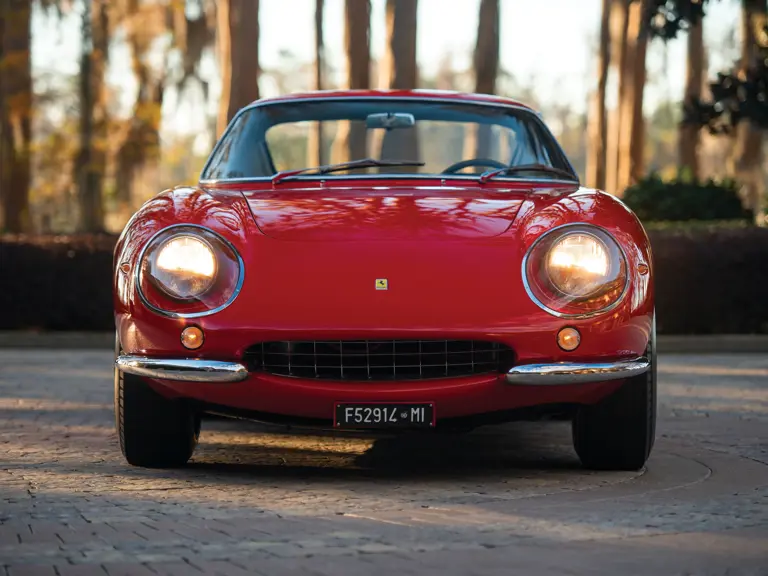
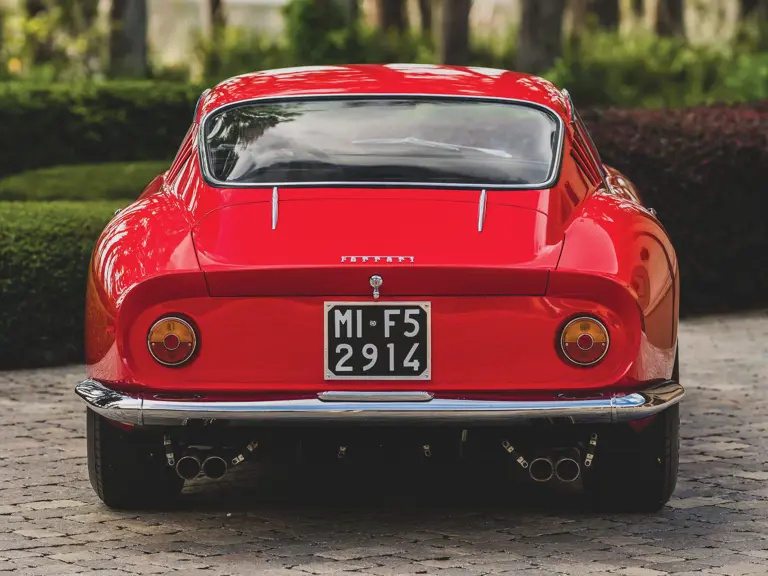
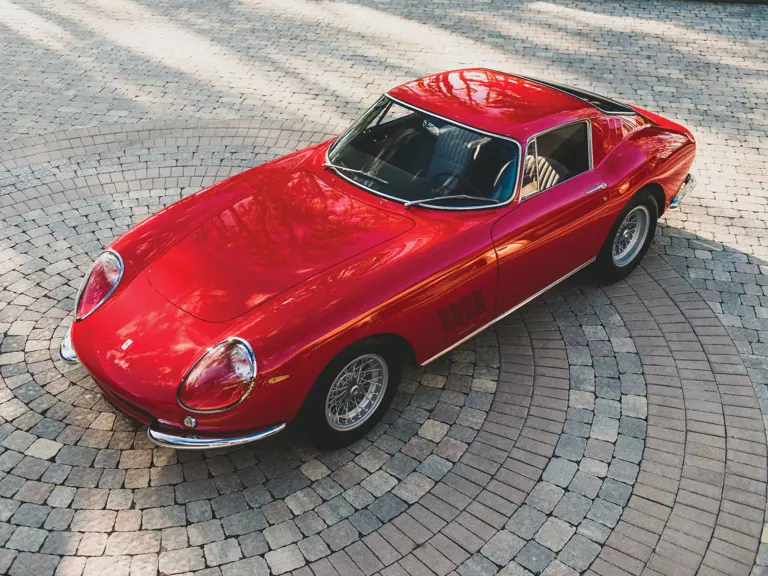
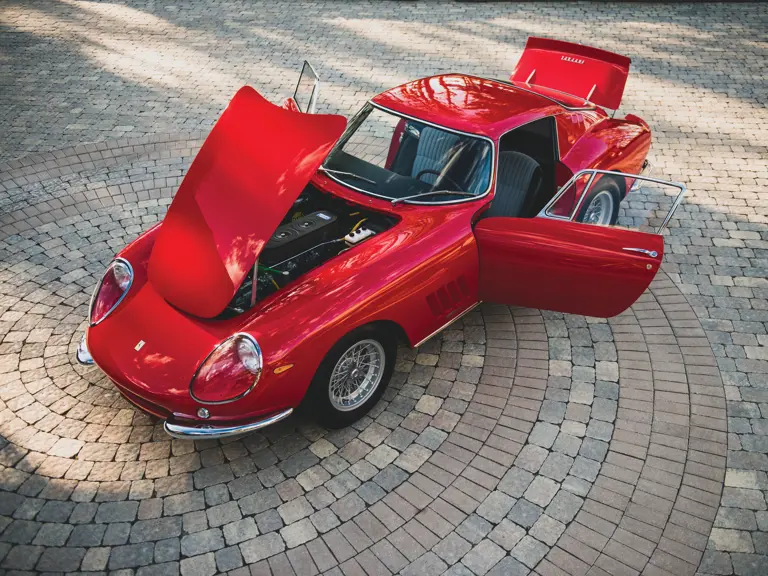
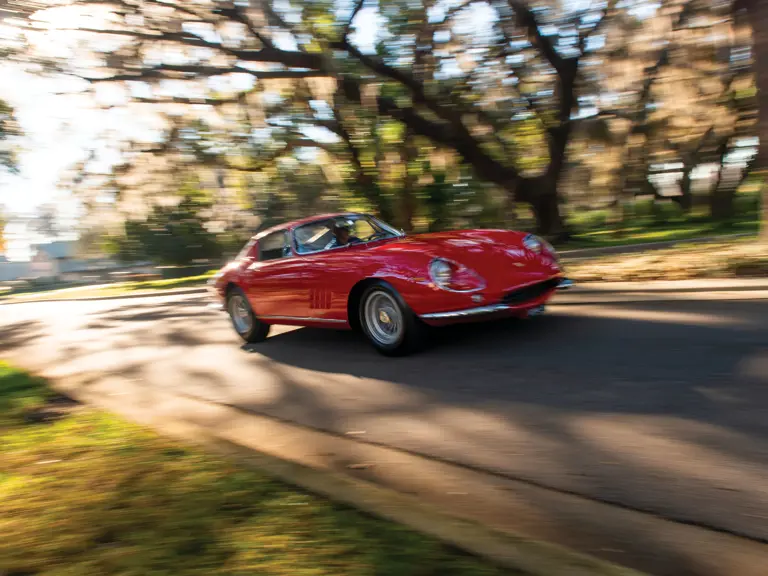

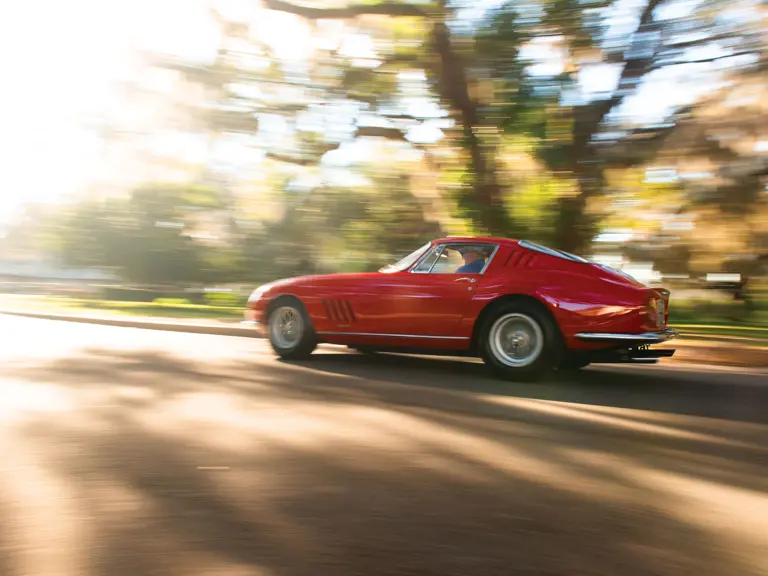
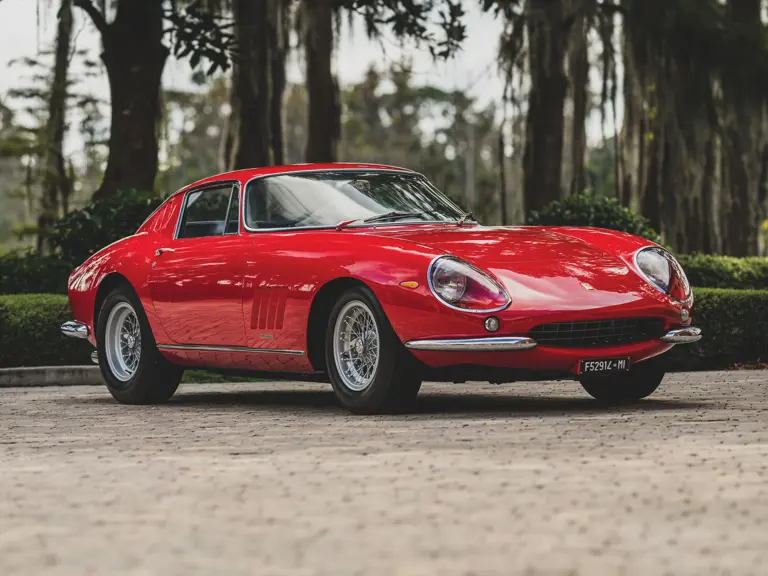
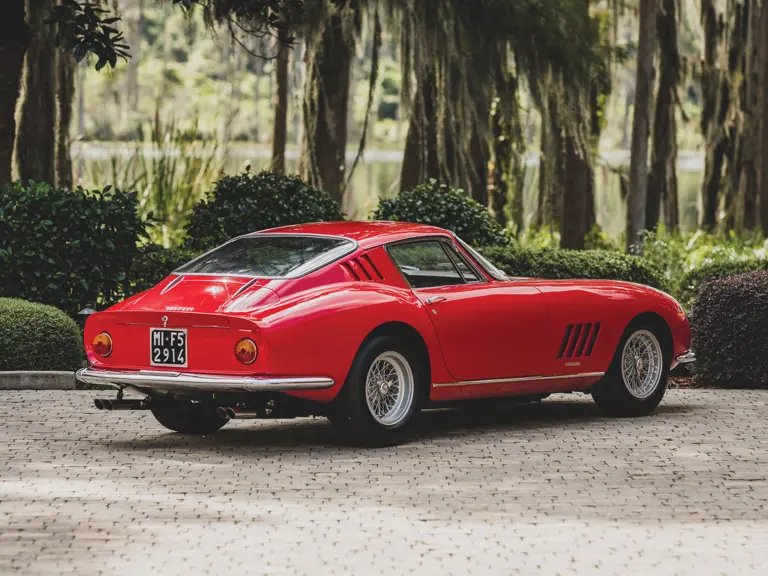


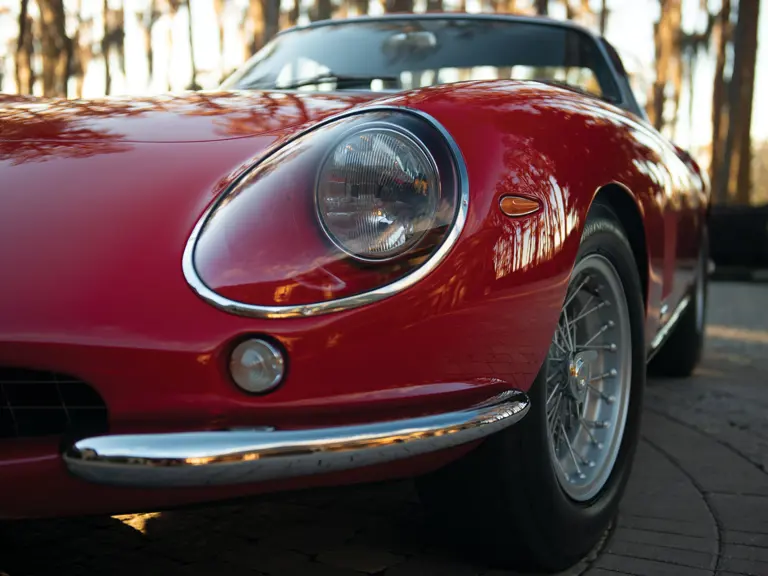
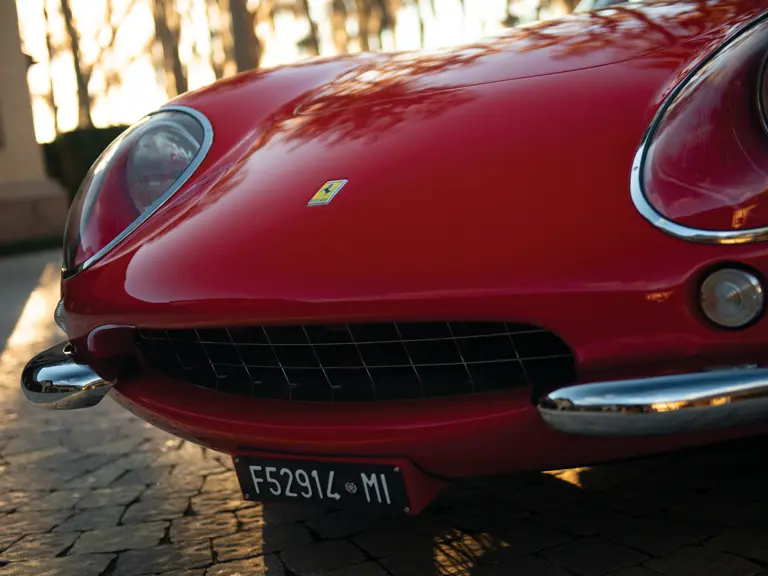

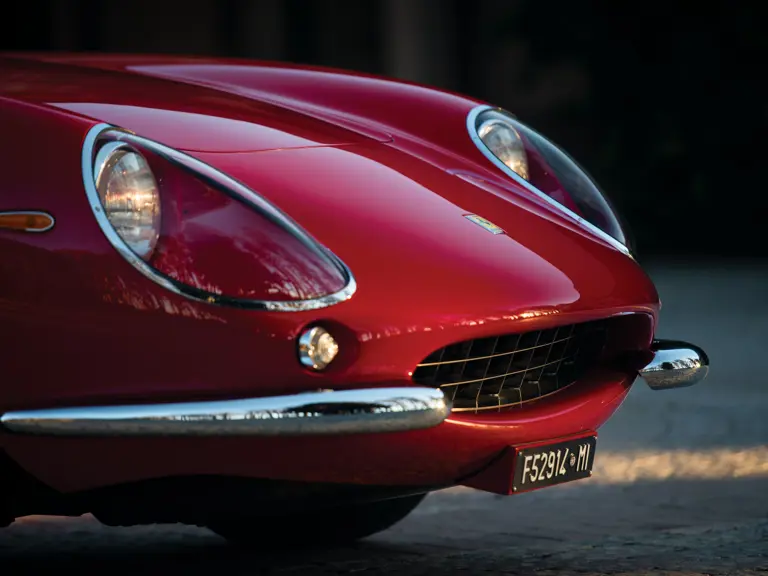

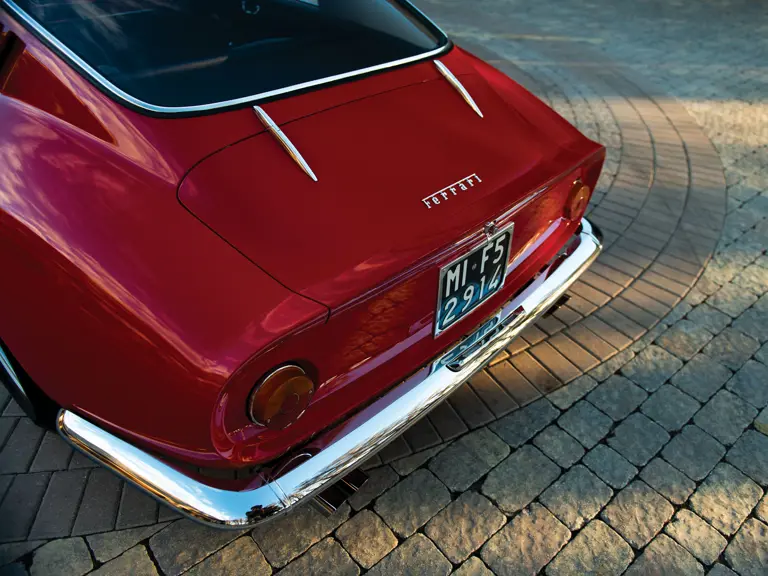
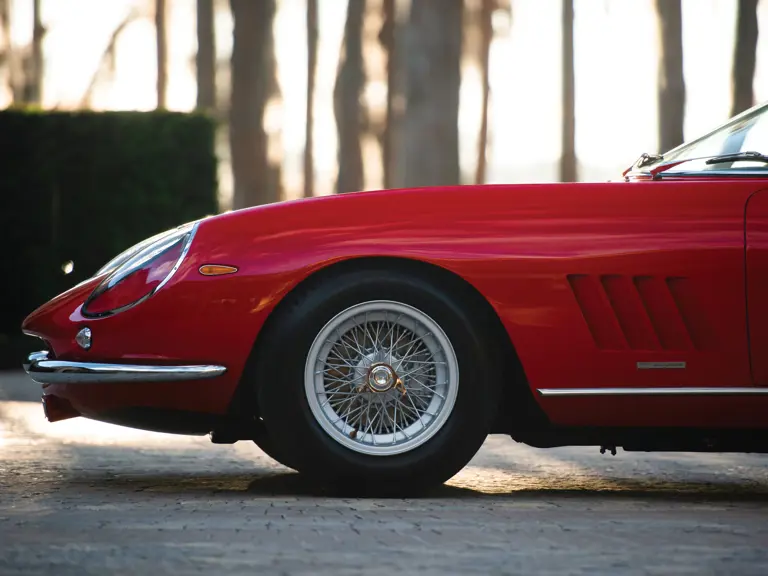

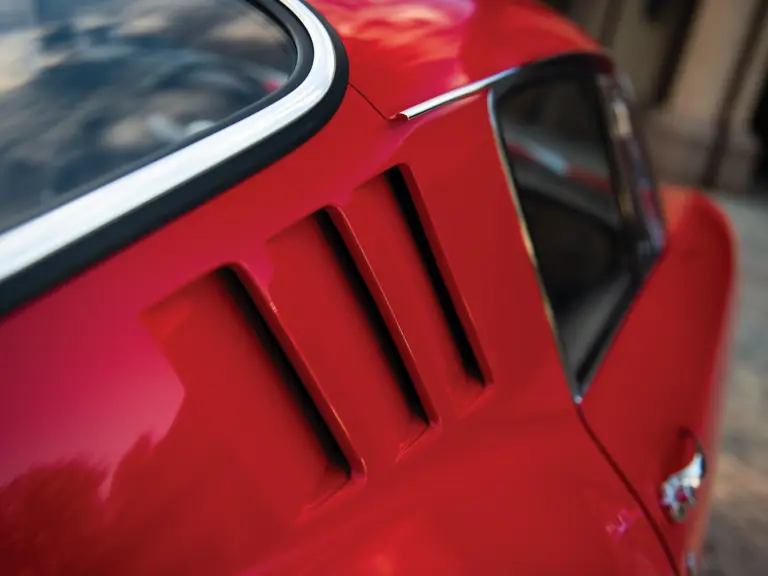
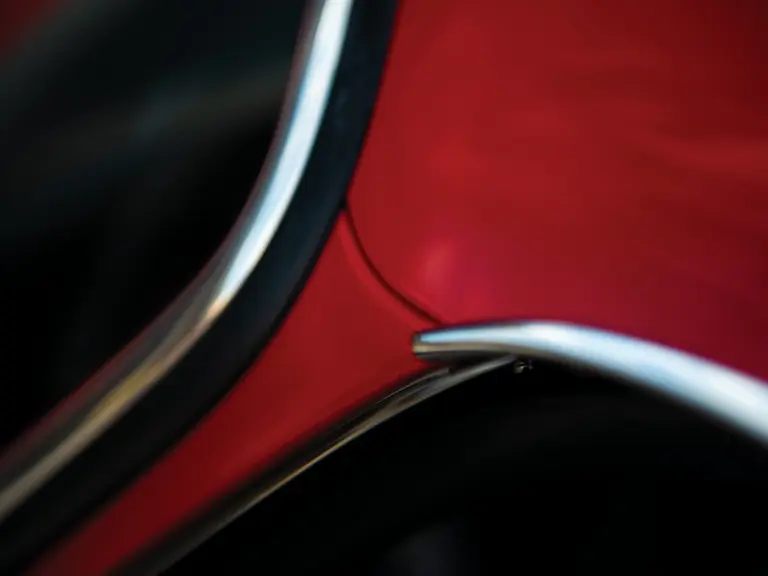

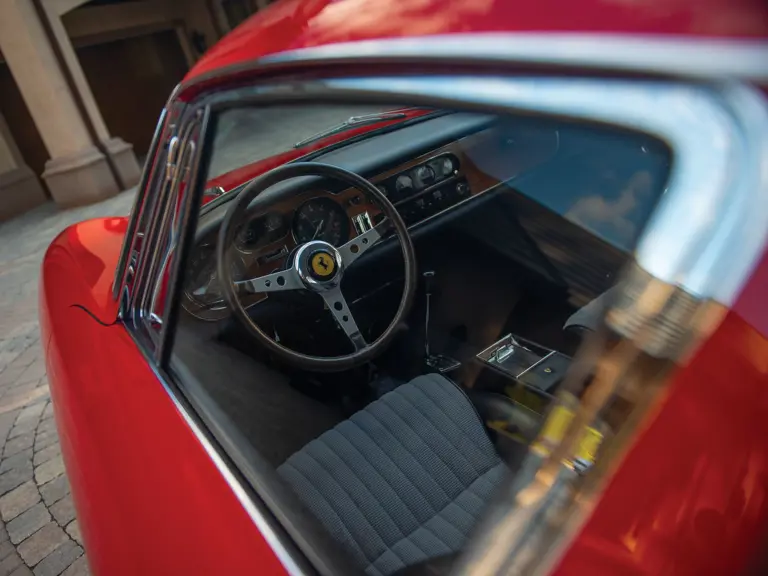
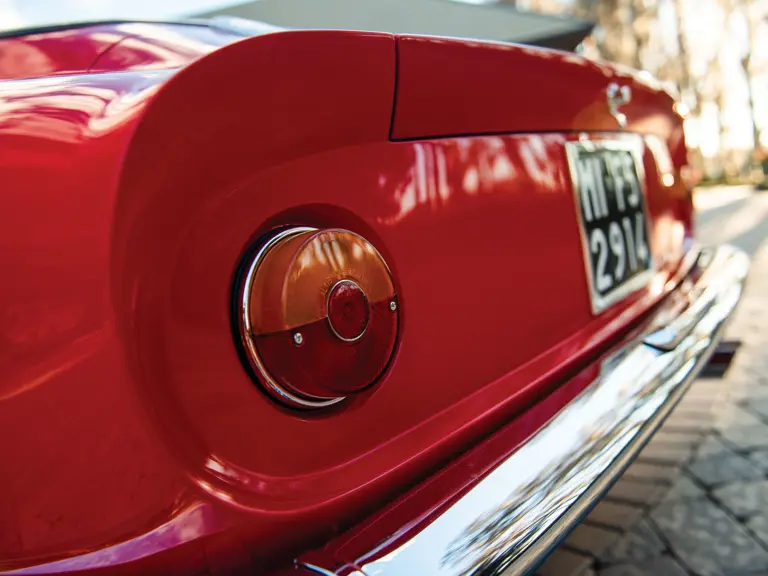
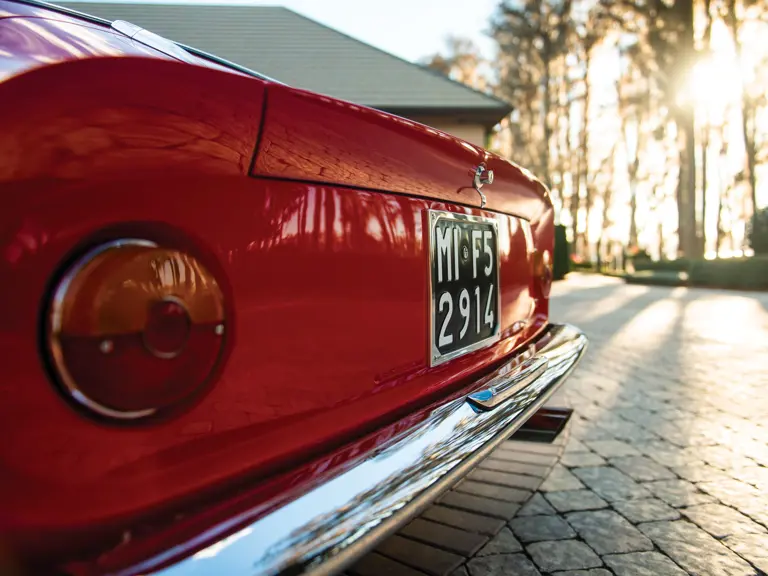
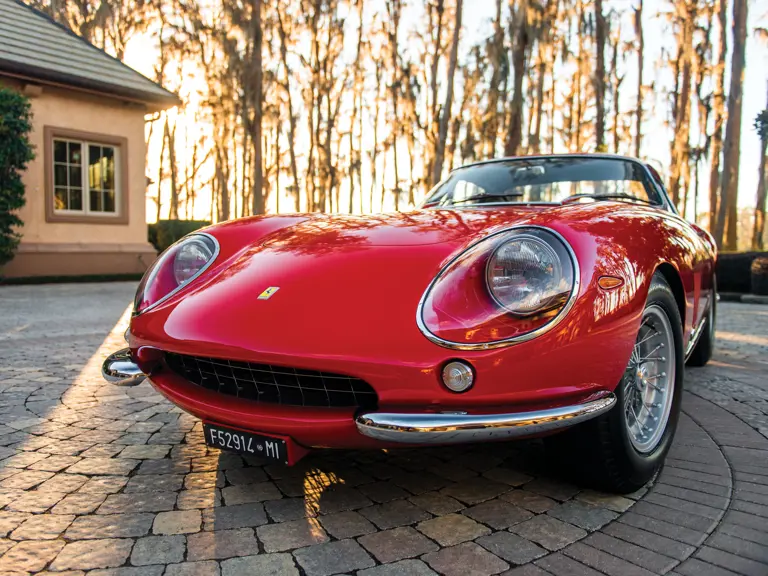
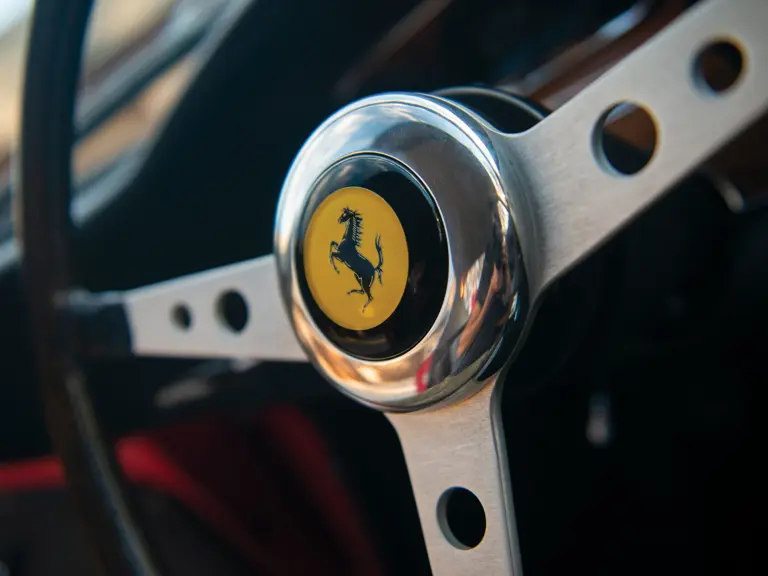
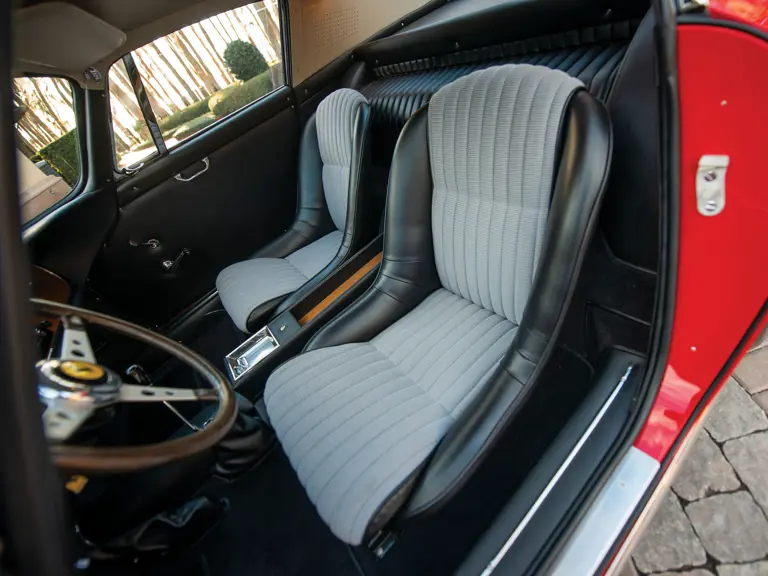
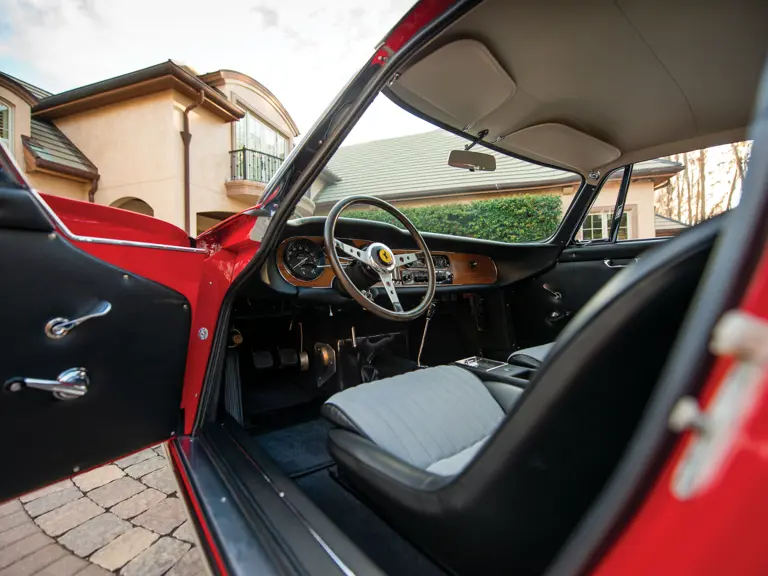
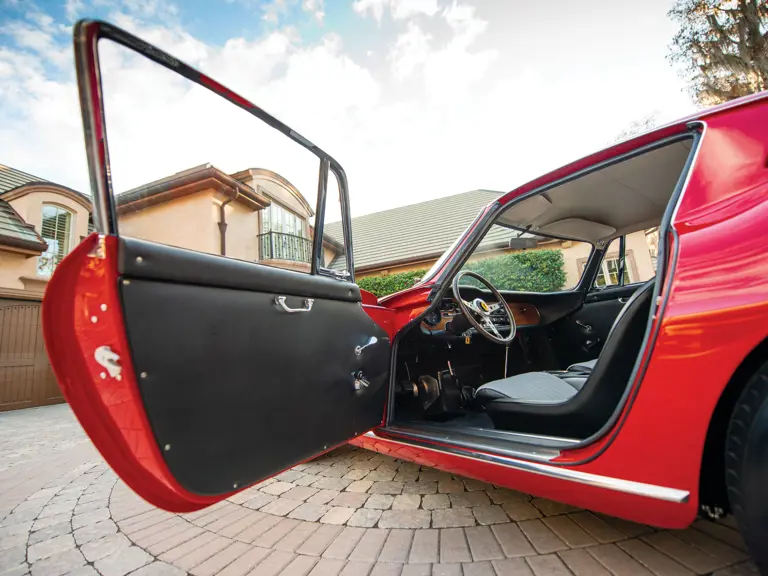

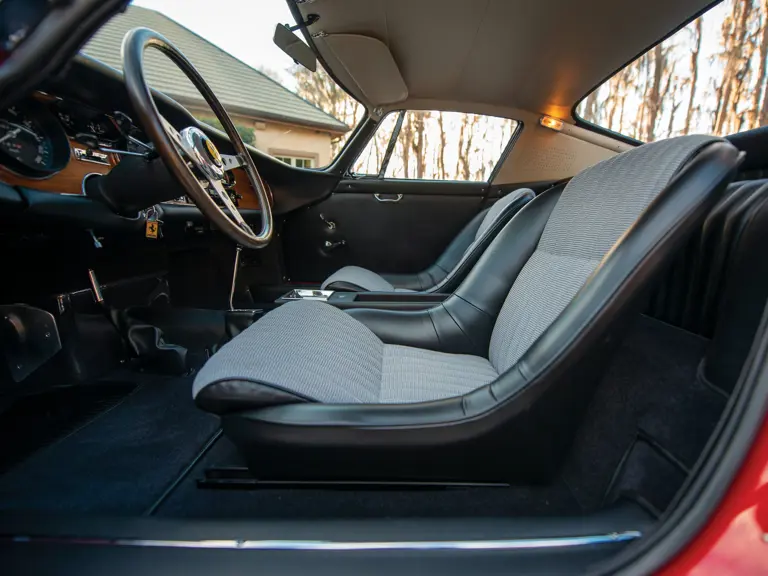

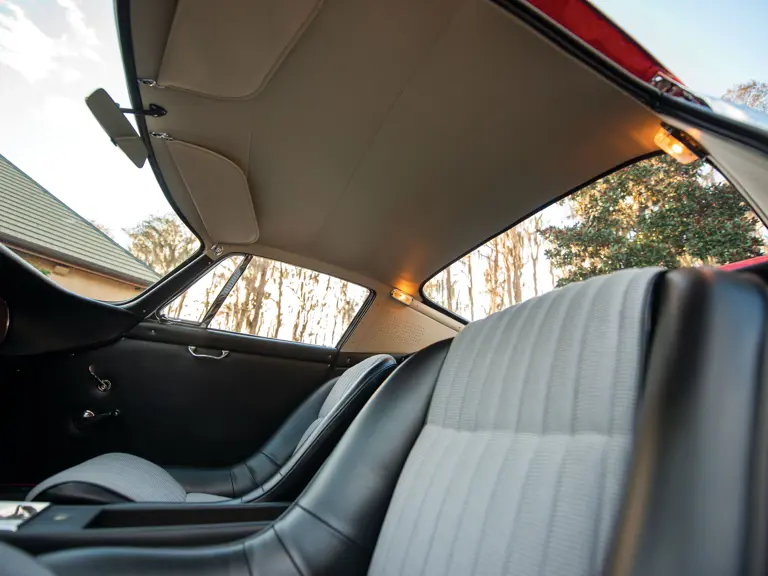
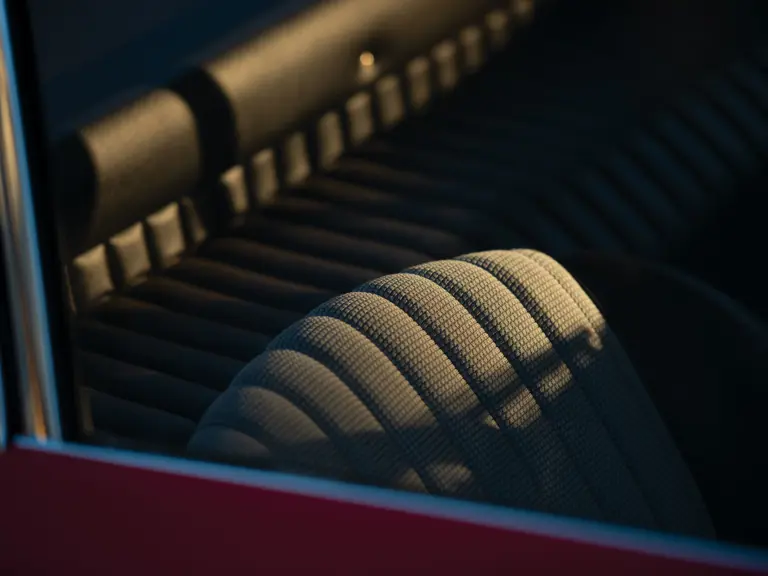
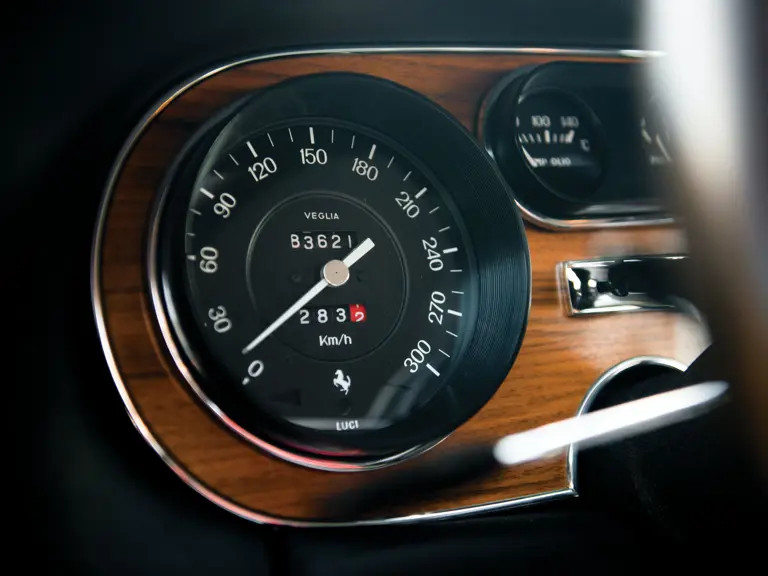
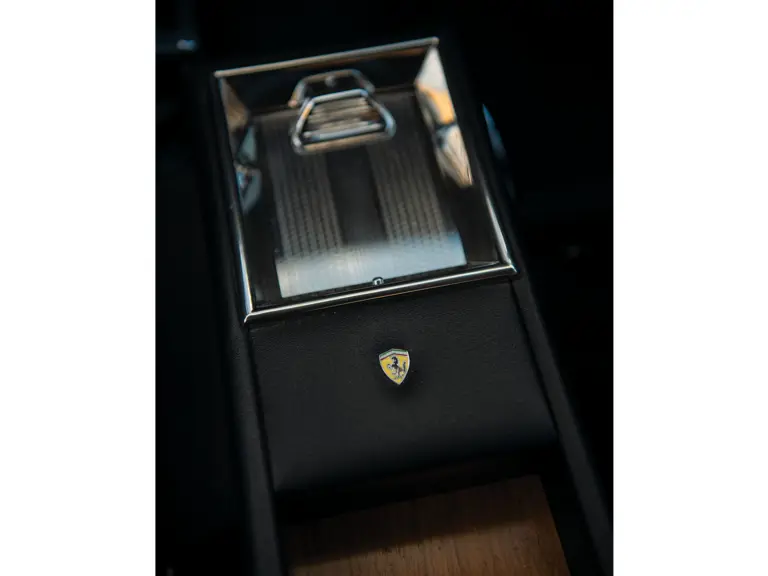
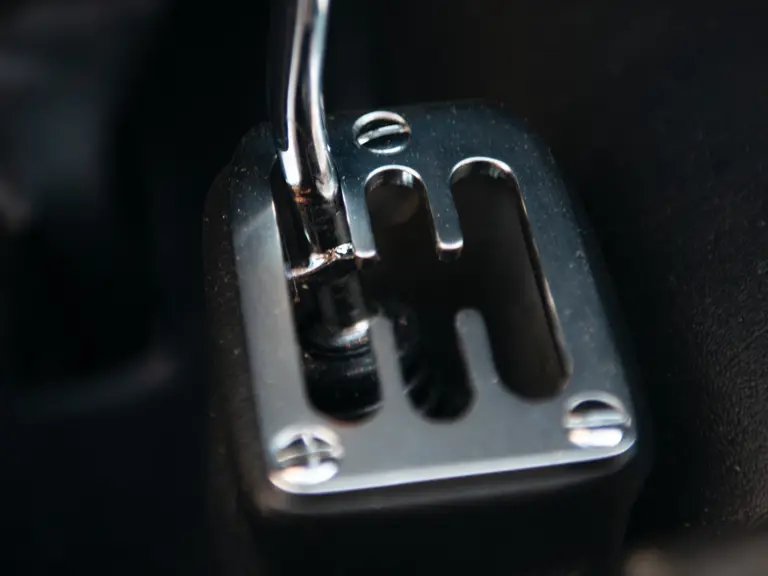
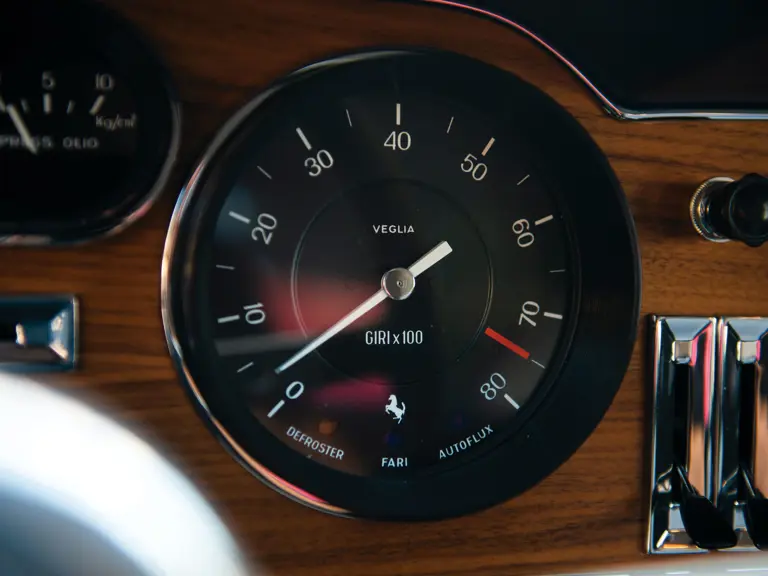

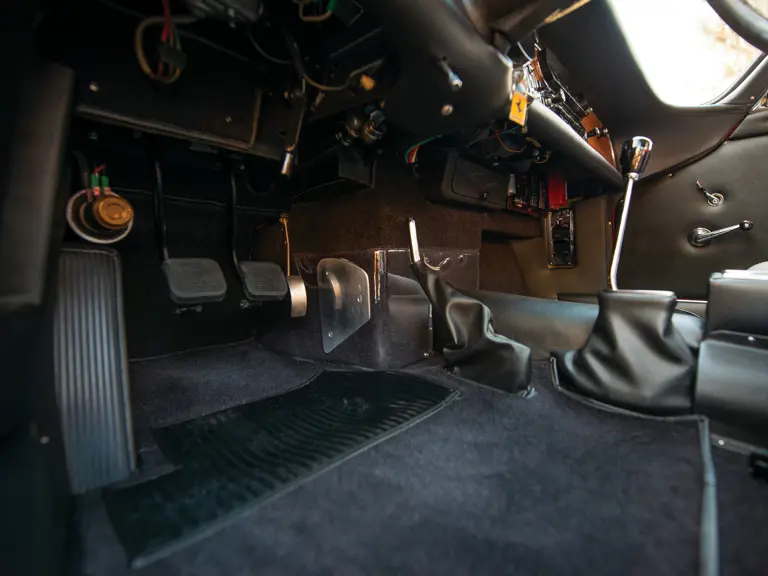
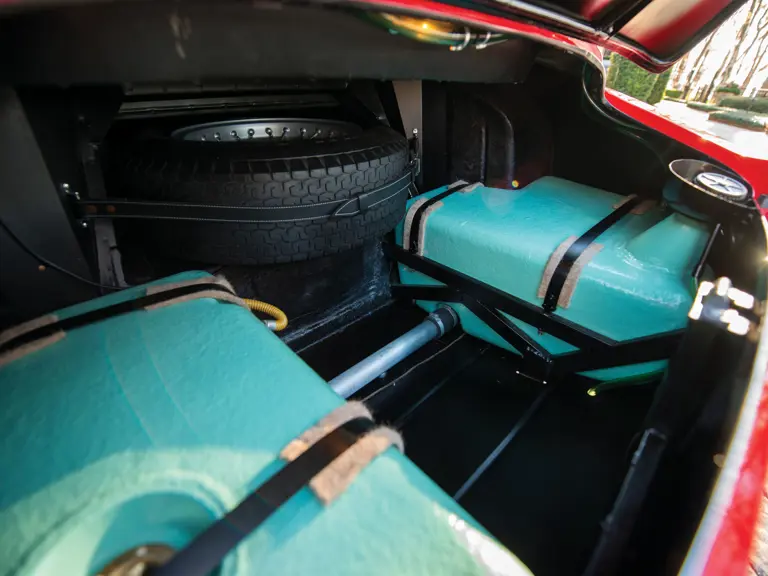

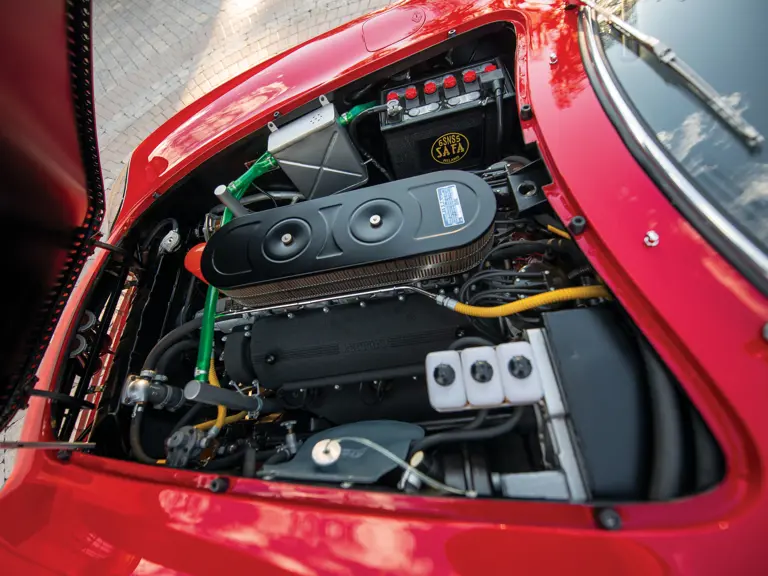



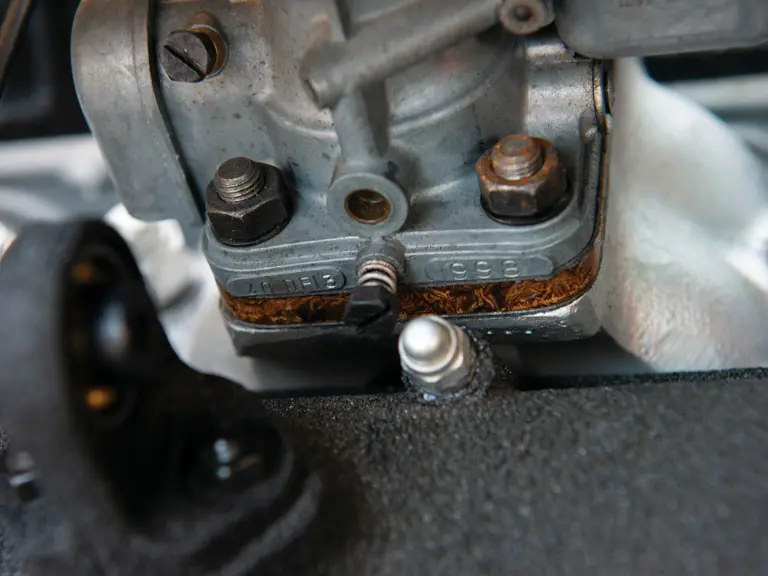
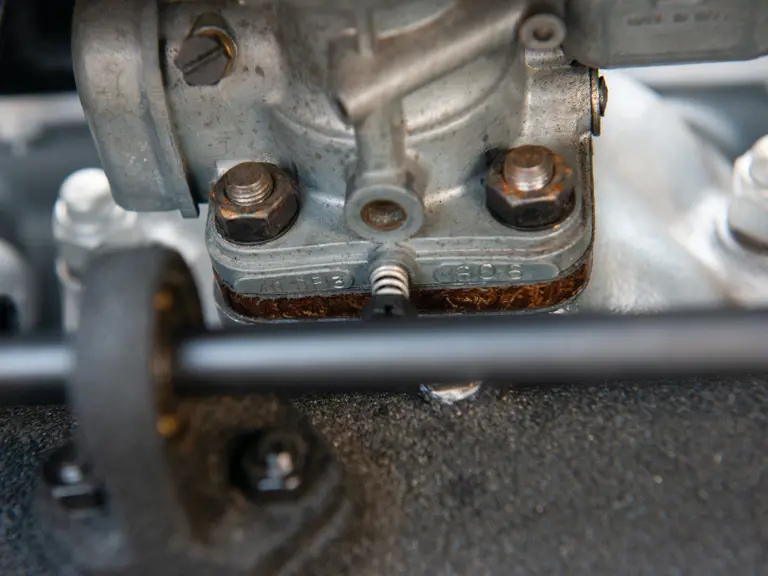

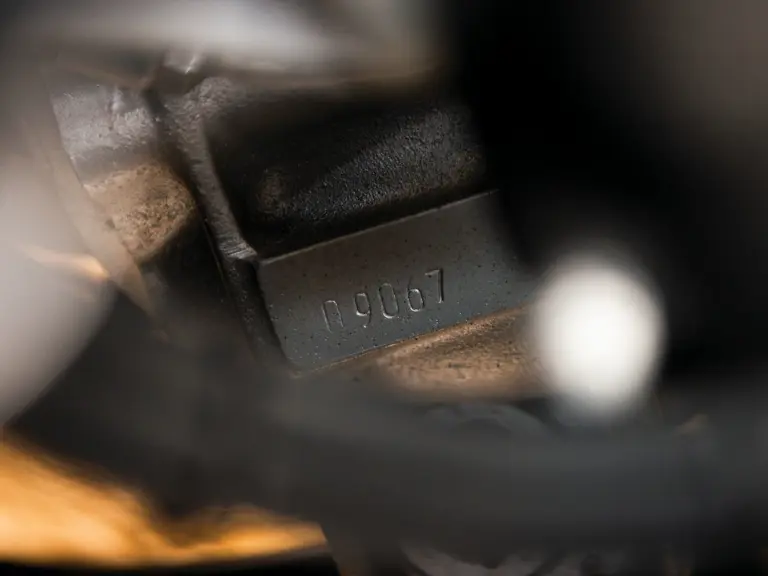

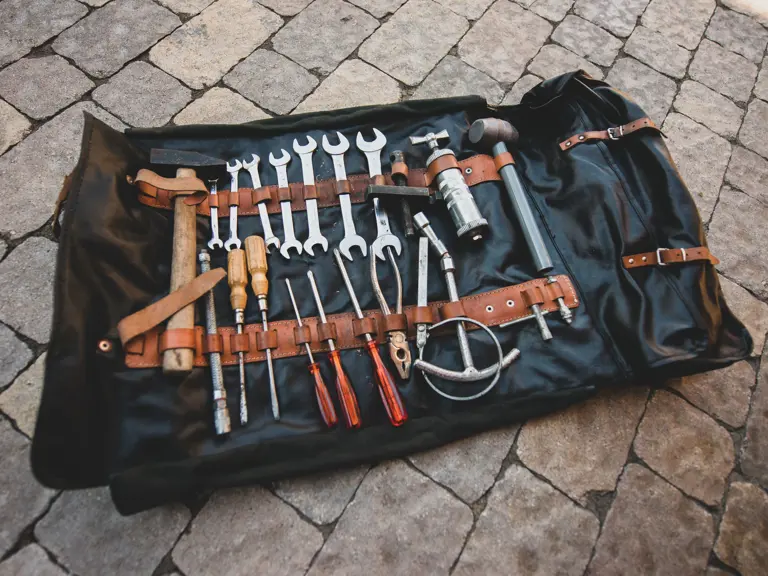
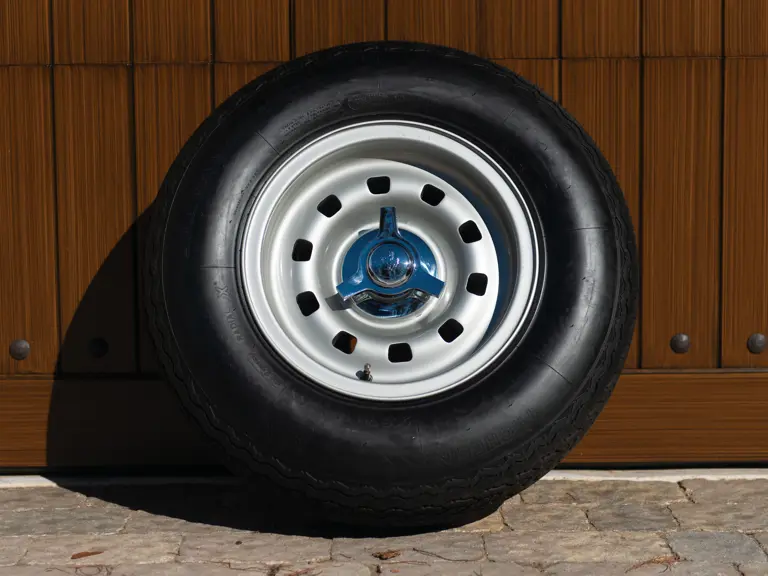
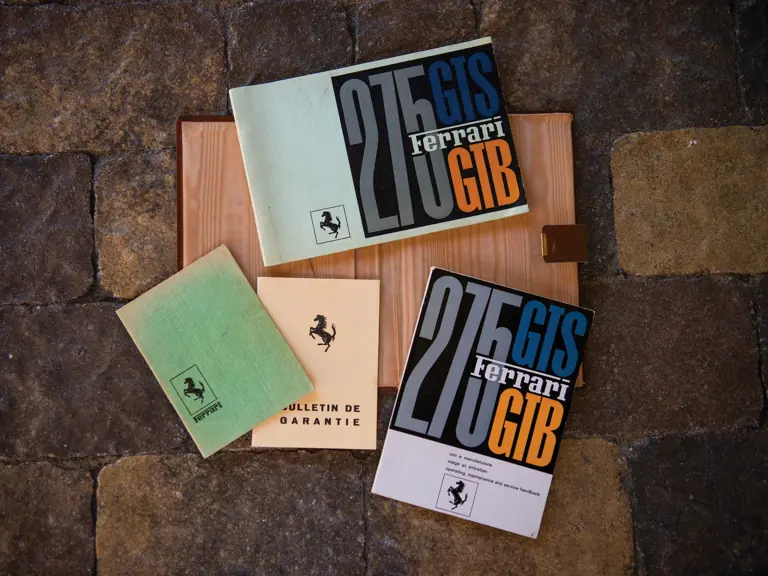
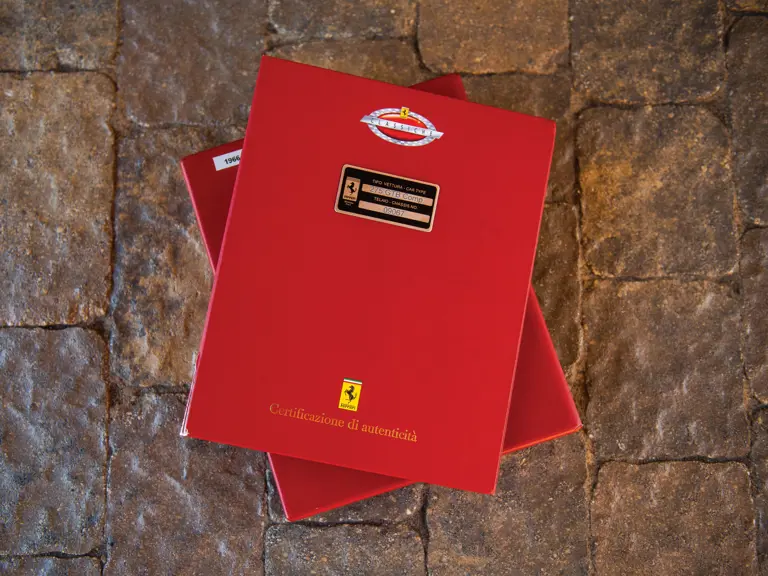
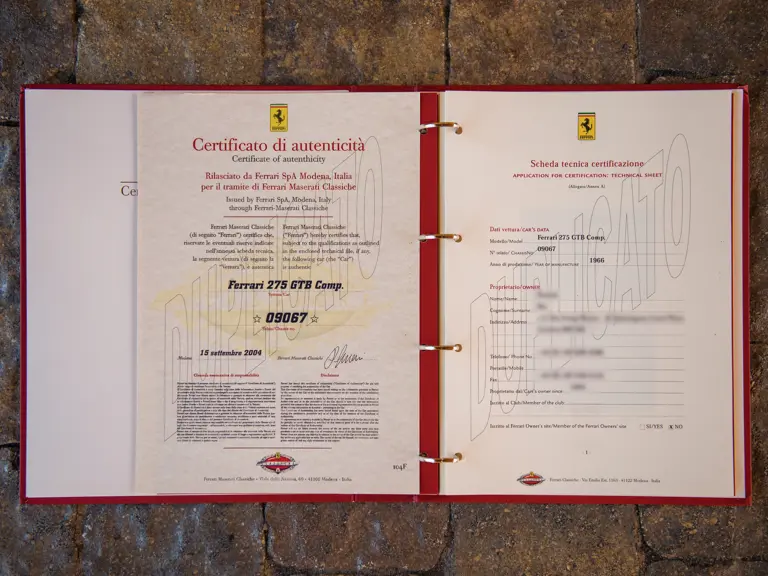

 | Monterey, California
| Monterey, California
